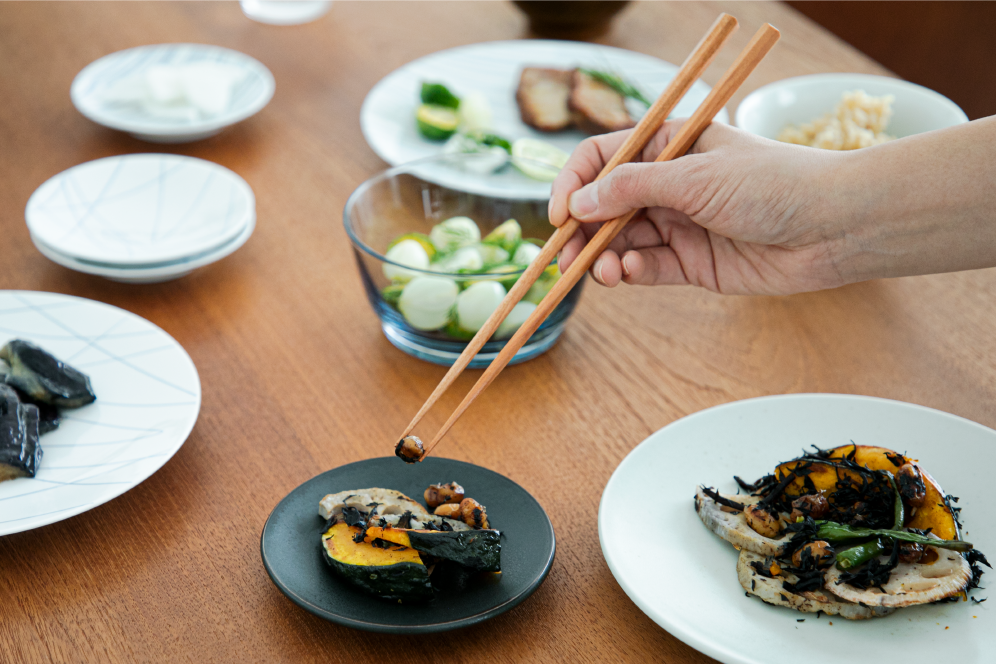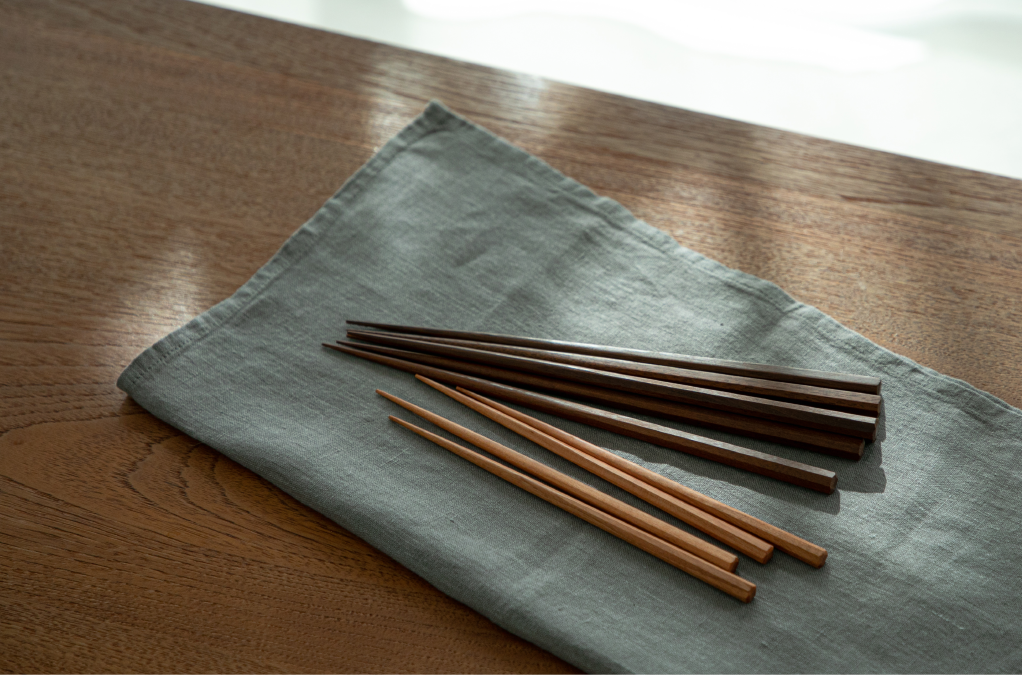Obama City in Fukui Prefecture (traditionally called Wakasa) is a major producer of chopsticks. Especially famous as the birthplace of “Nuribashi” (lacquered chopsticks), it has over 400 years of history and to this day produces around 80 percent of Japanese Nuribashi. It is a beautiful area surrounded by sea and mountains. Using these natural resources as well as protecting them, Obama plays an important role in preserving the chopsticks culture in Japan.
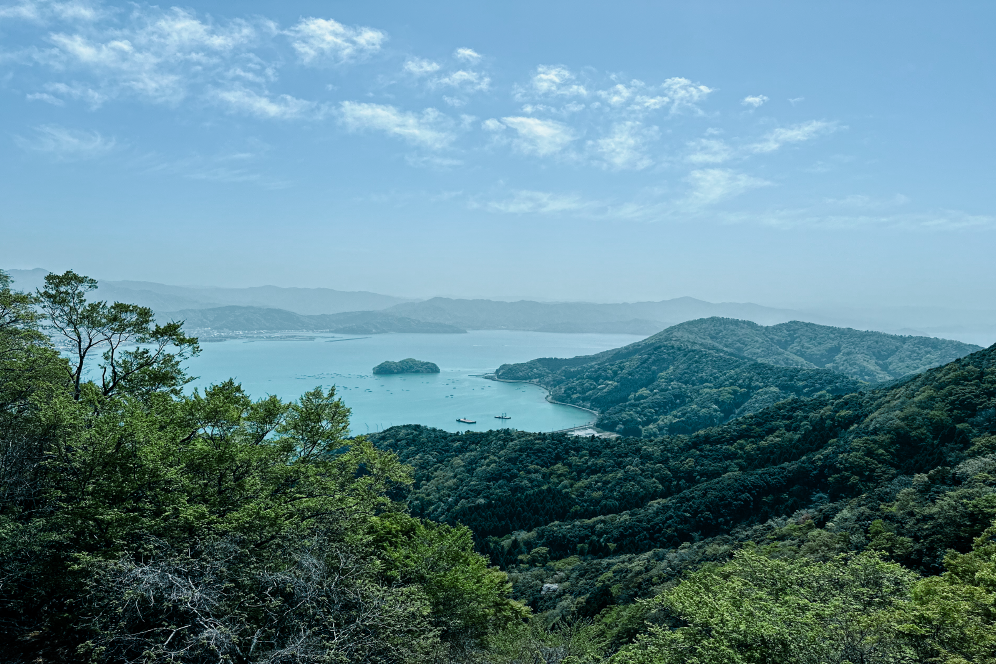

KINTO's HIBI chopsticks are also made in this region. Every stick is finished carefully by hand. See how experienced craftsmen bring our design to life balancing usability and aesthetics.
Base preparation
HIBI chopsticks are made from natural wood. The lumber is naturally dried for two to three years. When it is ready to be worked, it is first cut into planks, and then into sticks. The types of wood used for HIBI chopsticks are “Sakura” which is light and supple, and “Tetsuboku” which is hard and strong.
HIBI chopsticks are made from natural wood. The lumber is naturally dried for two to three years. When it is ready to be worked, it is first cut into planks, and then into sticks. The types of wood used for HIBI chopsticks are “Sakura” which is light and supple, and “Tetsuboku” which is hard and strong.
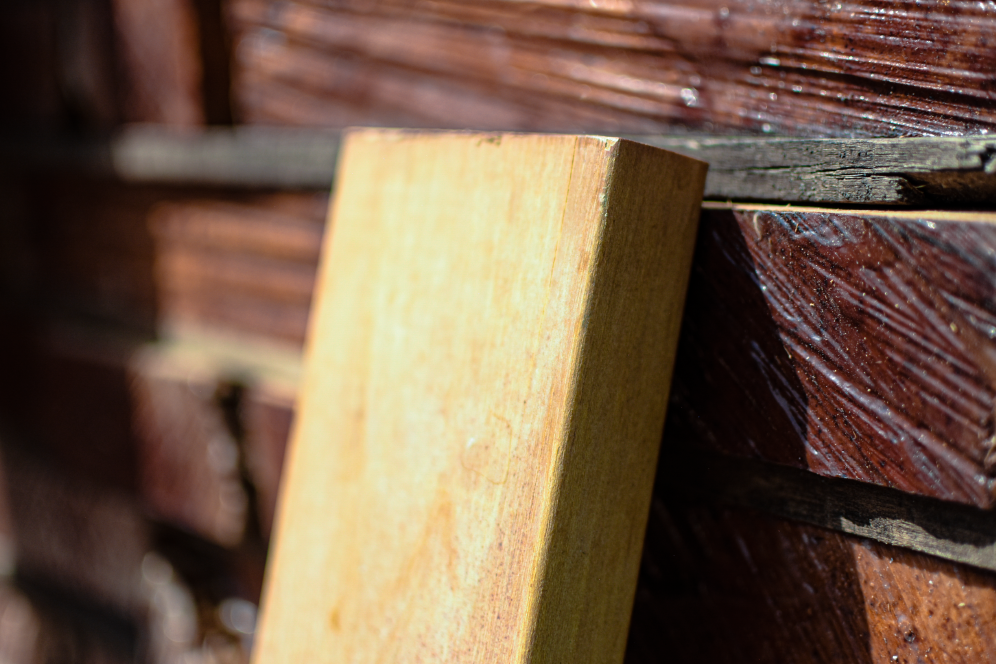

Wood processing
The base sticks are cut so that the top part has eight sides. Between the top part and the tip, the form is arched so that it fits better in the hand. The tip is pointed to make it easier to pick up food.
The base sticks are cut so that the top part has eight sides. Between the top part and the tip, the form is arched so that it fits better in the hand. The tip is pointed to make it easier to pick up food.
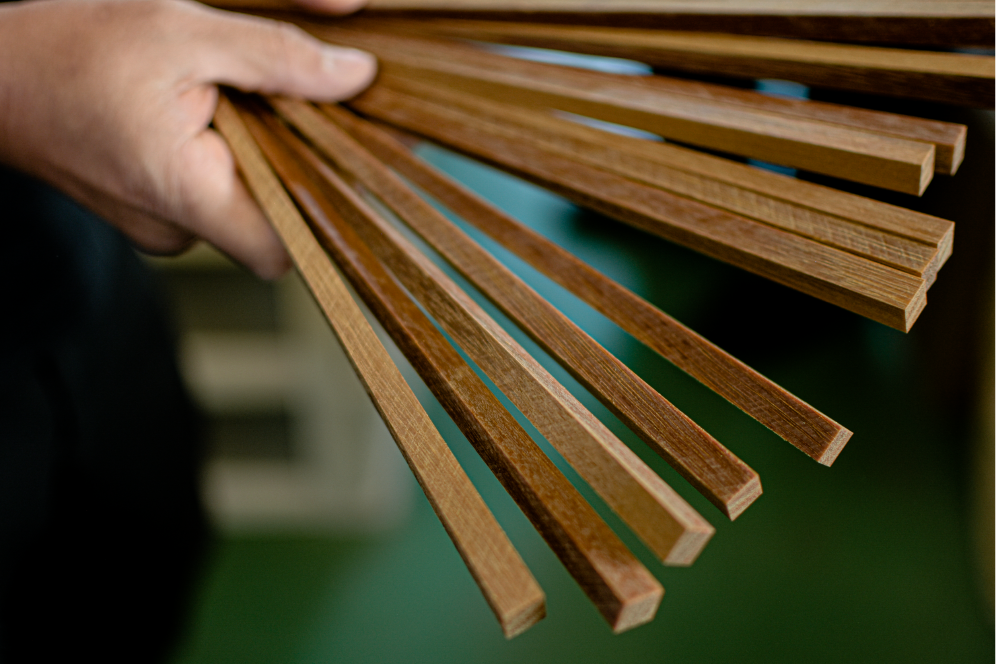
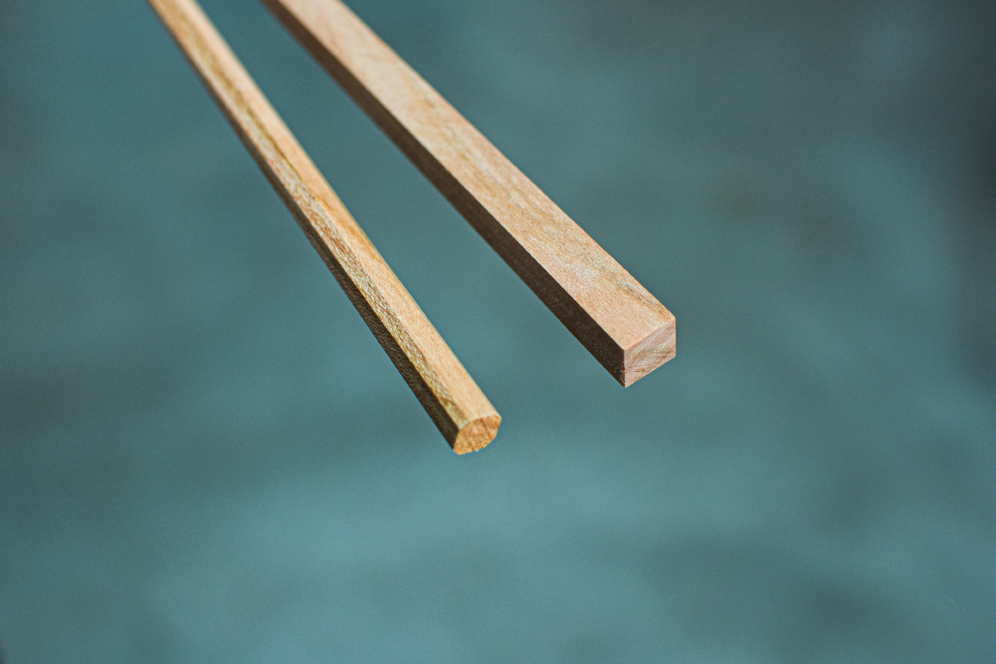
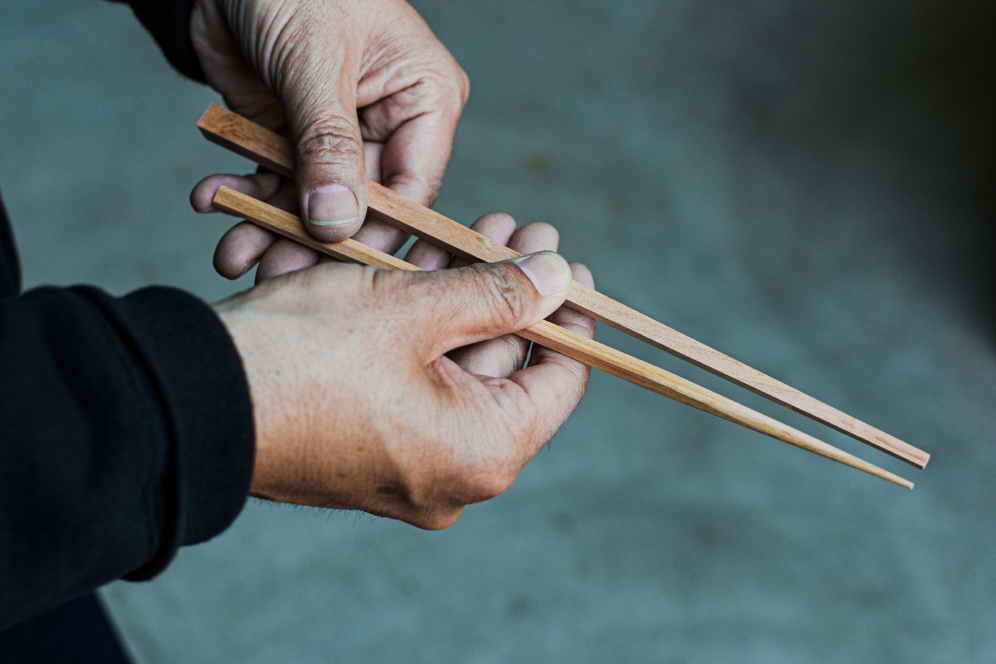
Polishing
Each chopstick is polished thoroughly to feature the natural texture of wood and make it nice and smooth.
Each chopstick is polished thoroughly to feature the natural texture of wood and make it nice and smooth.
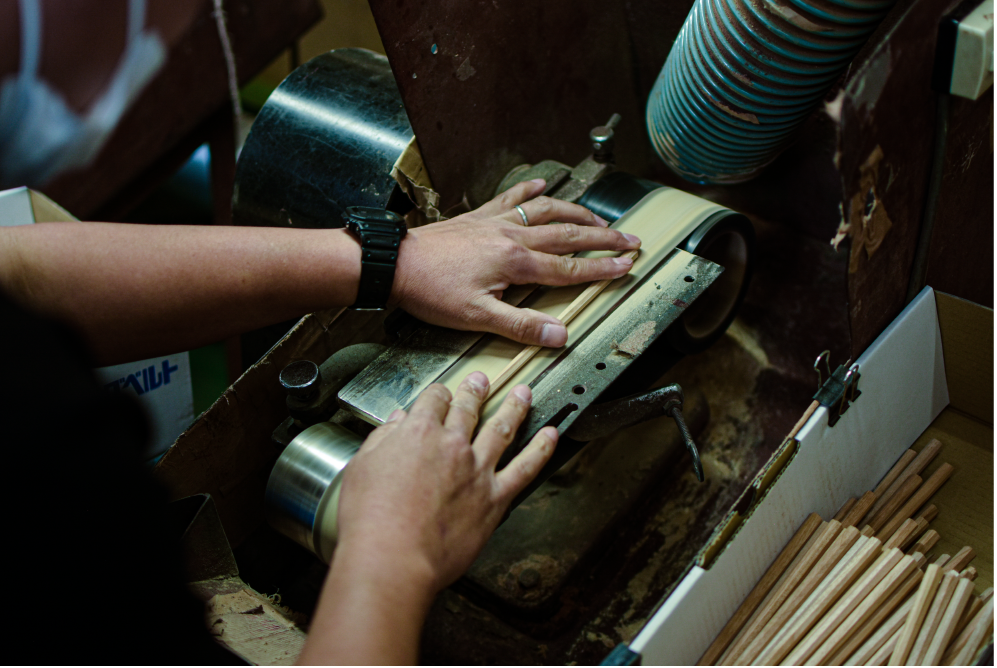
Finishing on the top
The raw edges at the top of the chopstick are carefully shaved. This is a very delicate process that requires a trained and steady hand. This cut serves as an accent to the HIBI design.
The raw edges at the top of the chopstick are carefully shaved. This is a very delicate process that requires a trained and steady hand. This cut serves as an accent to the HIBI design.
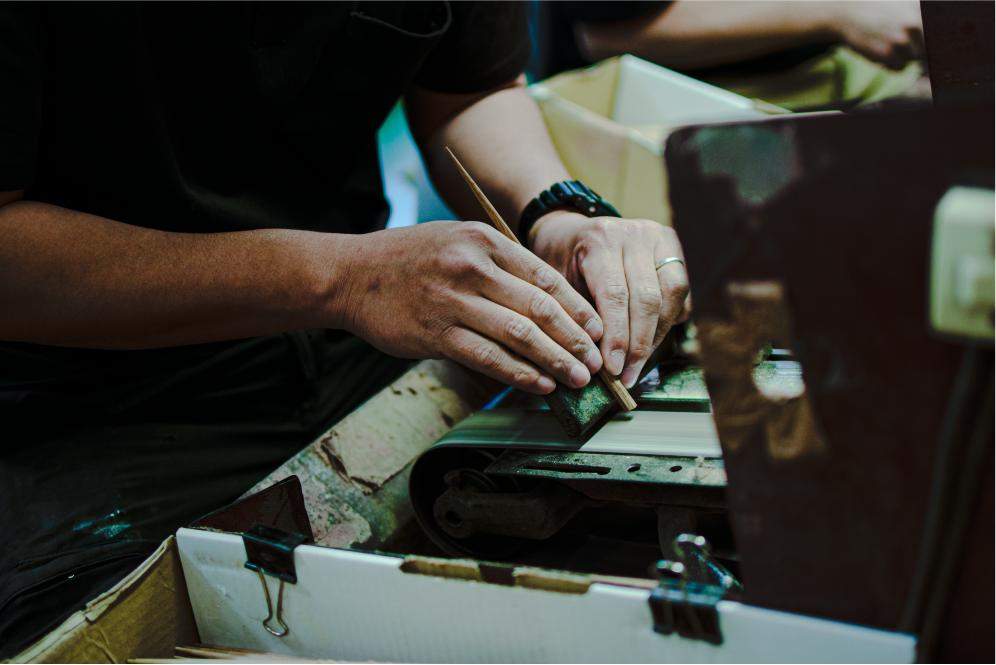
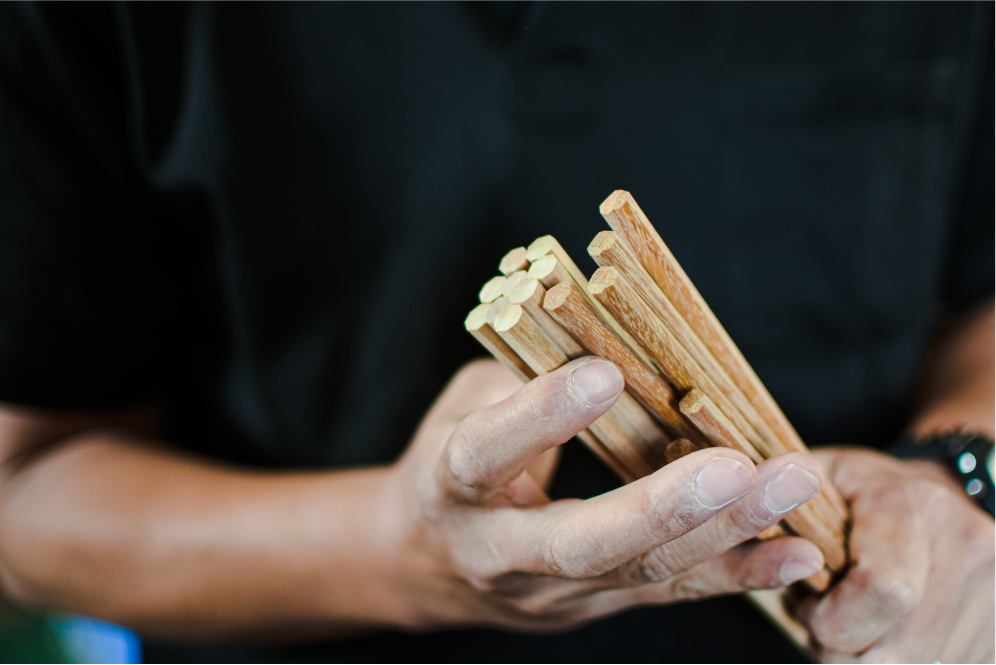
Waxing
Natural bee wax is applied by cloth. The chopsticks are then dried by a cooling fan. This step makes the wood softer so that they are pleasant to hold.
Natural bee wax is applied by cloth. The chopsticks are then dried by a cooling fan. This step makes the wood softer so that they are pleasant to hold.
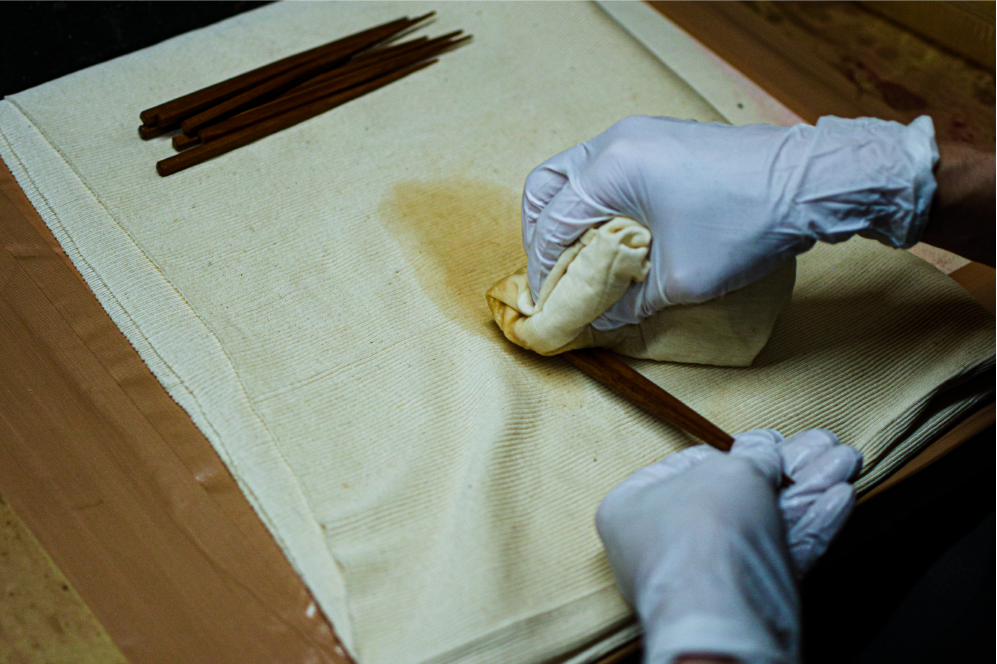
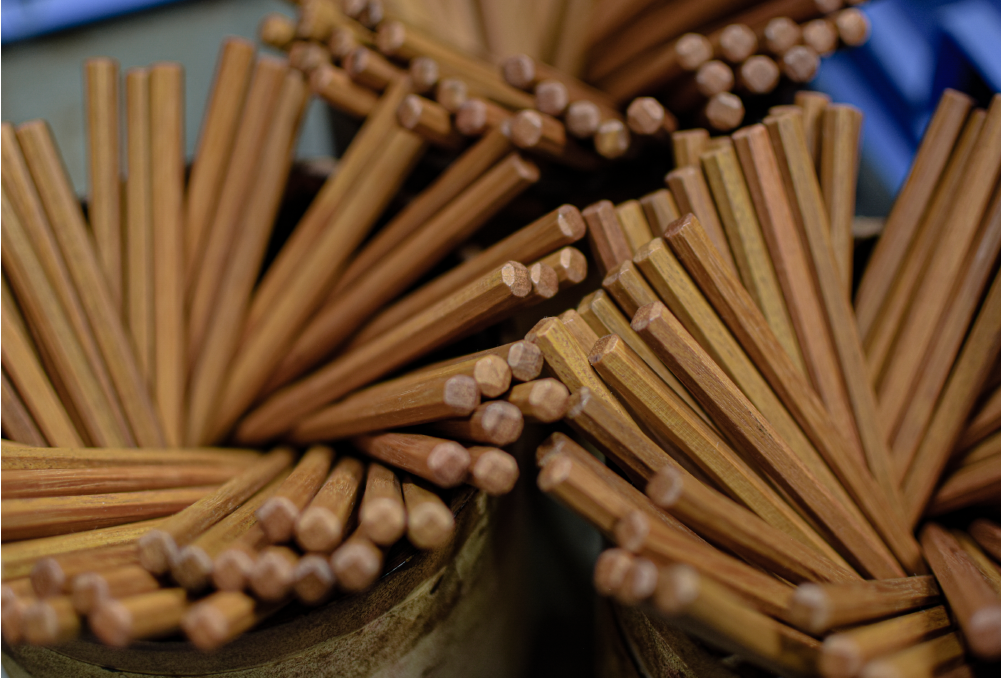
HIBI chopsticks appear simple in design but once you hold them, you will be able to feel how much attention has been paid to the details. We hope that they enrich your everyday life.
